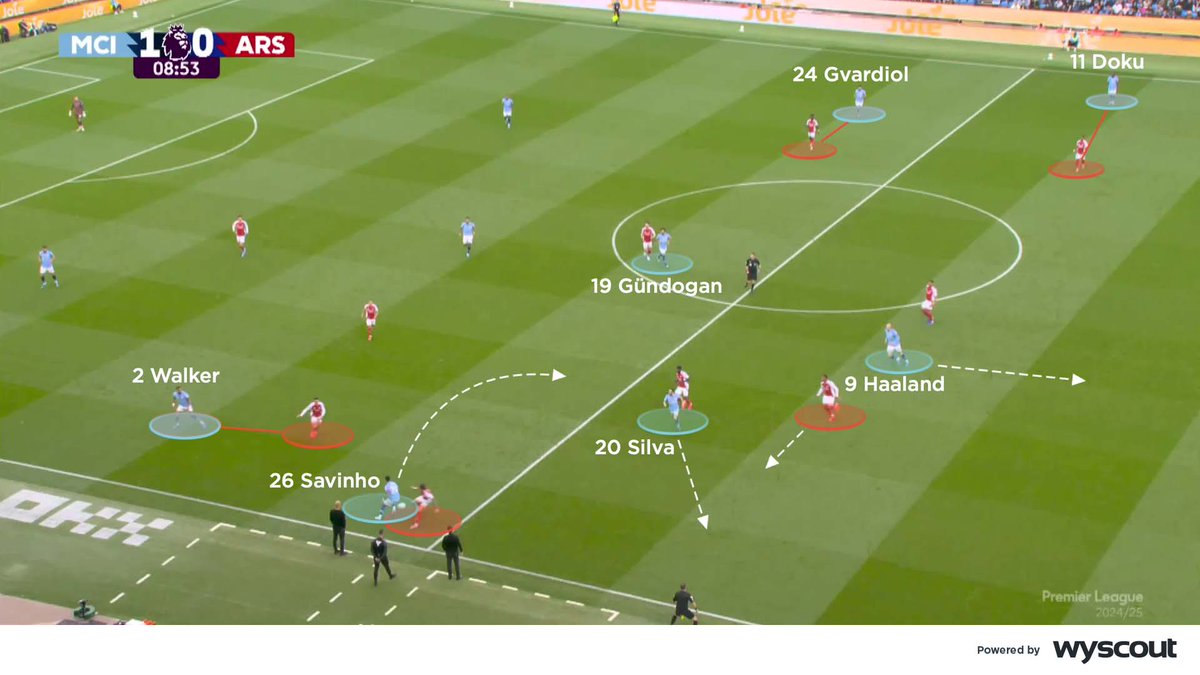A THREAD! 👇 The 2020/21 Champions League groups and who each team is managed by 🏆 #UCLdraw
Group A
🇩🇪 Bayern Munich - Hans-Dieter Flick 🇩🇪
🇪🇸 Atlético Madrid - Diego Simeone 🇦🇷
🇦🇹 RB Salzburg - Jesse Marsch 🇺🇸
🇷🇺 Lokomotiv Moscow - Marko Nikolić 🇷🇸
🇩🇪 Bayern Munich - Hans-Dieter Flick 🇩🇪
🇪🇸 Atlético Madrid - Diego Simeone 🇦🇷
🇦🇹 RB Salzburg - Jesse Marsch 🇺🇸
🇷🇺 Lokomotiv Moscow - Marko Nikolić 🇷🇸
Group B
🇪🇸 Real Madrid - Zinedine Zidane 🇫🇷
🇺🇦 Shakhtar Donetsk - Luís Castro 🇵🇹
🇮🇹 Inter - Antonio Conte 🇮🇹
🇩🇪 Borussia Mönchengladbach - Marco Rose 🇩🇪
🇪🇸 Real Madrid - Zinedine Zidane 🇫🇷
🇺🇦 Shakhtar Donetsk - Luís Castro 🇵🇹
🇮🇹 Inter - Antonio Conte 🇮🇹
🇩🇪 Borussia Mönchengladbach - Marco Rose 🇩🇪
Group C
🇵🇹 Porto - Sérgio Conceição 🇵🇹
🏴 Manchester City - Pep Guardiola 🇪🇸
🇬🇷 Olympiacos - Pedro Martins 🇵🇹
🇫🇷 Marseille - André Villas-Boas 🇵🇹
🇵🇹 Porto - Sérgio Conceição 🇵🇹
🏴 Manchester City - Pep Guardiola 🇪🇸
🇬🇷 Olympiacos - Pedro Martins 🇵🇹
🇫🇷 Marseille - André Villas-Boas 🇵🇹
Group D
🏴 Liverpool - Jürgen Klopp 🇩🇪
🇳🇱 Ajax - Erik ten Hag 🇳🇱
🇮🇹 Atalanta - Gian Piero Gasperini 🇮🇹
🇩🇰 Midtjylland - Brian Priske 🇩🇰
🏴 Liverpool - Jürgen Klopp 🇩🇪
🇳🇱 Ajax - Erik ten Hag 🇳🇱
🇮🇹 Atalanta - Gian Piero Gasperini 🇮🇹
🇩🇰 Midtjylland - Brian Priske 🇩🇰
Group E
🇪🇸 Sevilla - Julen Lopetegui 🇪🇸
🏴 Chelsea - Frank Lampard 🏴
🇷🇺 Krasnodar - Murad Musayev 🇷🇺
🇫🇷 Stade Rennais - Julien Stéphan 🇫🇷
🇪🇸 Sevilla - Julen Lopetegui 🇪🇸
🏴 Chelsea - Frank Lampard 🏴
🇷🇺 Krasnodar - Murad Musayev 🇷🇺
🇫🇷 Stade Rennais - Julien Stéphan 🇫🇷
Group F
🇷🇺 Zenit - Sergei Semak 🇷🇺
🇩🇪 Borussia Dortmund - Lucien Favre 🇨🇭
🇮🇹 Lazio - Simone Inzaghi 🇮🇹
🇧🇪 Club Brugge - Philippe Clement 🇧🇪
🇷🇺 Zenit - Sergei Semak 🇷🇺
🇩🇪 Borussia Dortmund - Lucien Favre 🇨🇭
🇮🇹 Lazio - Simone Inzaghi 🇮🇹
🇧🇪 Club Brugge - Philippe Clement 🇧🇪
Group G
🇮🇹 Juventus - Andrea Pirlo 🇮🇹
🇪🇸 Barcelona - Ronald Koeman 🇳🇱
🇺🇦 Dynamo Kyiv - Mircea Lucescu 🇷🇴
🇭🇺 Ferencváros - Serhiy Rebrov 🇺🇦
🇮🇹 Juventus - Andrea Pirlo 🇮🇹
🇪🇸 Barcelona - Ronald Koeman 🇳🇱
🇺🇦 Dynamo Kyiv - Mircea Lucescu 🇷🇴
🇭🇺 Ferencváros - Serhiy Rebrov 🇺🇦
Group H
🇫🇷 PSG - Thomas Tuchel 🇩🇪
🏴 Manchester United - Ole Gunnar Solskjaer 🇳🇴
🇩🇪 RB Leipzig - Julian Nagelsmann 🇩🇪
🇹🇷 İstanbul Başakşehir - Okan Buruk 🇹🇷
🇫🇷 PSG - Thomas Tuchel 🇩🇪
🏴 Manchester United - Ole Gunnar Solskjaer 🇳🇴
🇩🇪 RB Leipzig - Julian Nagelsmann 🇩🇪
🇹🇷 İstanbul Başakşehir - Okan Buruk 🇹🇷
• • •
Missing some Tweet in this thread? You can try to
force a refresh
















